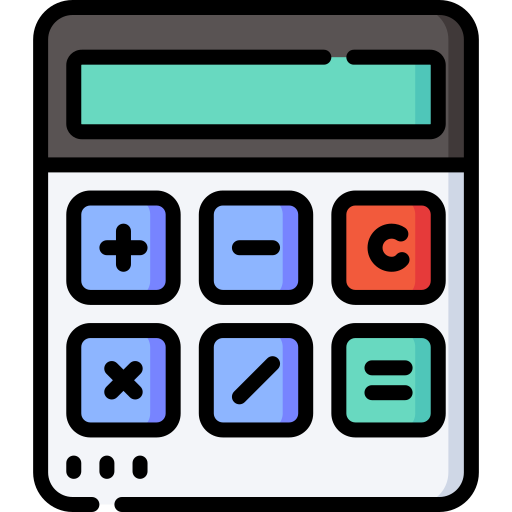-
Key Terms in Loan Calculation
📘 Loan
A loan is a sum of money borrowed from a bank, financial institution, or lender with the agreement to repay it over time. This repayment typically includes the principal amount plus interest. Loans are used for various purposes, including buying a home, vehicle, funding education, or managing personal expenses.
Types of Loans:
- Secured Loan: Backed by collateral (e.g., home loan, car loan).
- Unsecured Loan: No collateral required (e.g., personal loan).
- Fixed-Rate Loan: Interest rate remains the same throughout the loan period.
- Variable-Rate Loan: Interest rate changes based on market conditions.
💰 EMI (Equated Monthly Installment)
EMI is the fixed monthly payment made by a borrower to repay a loan over a specified period. It includes both the principal and the interest, ensuring the loan is repaid in manageable portions over time.
EMI Calculation Formula:
EMI=P×r×(1+r)n(1+r)n−1EMI = \frac{P \times r \times (1 + r)^n}{(1 + r)^n – 1}EMI=(1+r)n−1P×r×(1+r)n
Where:
- P = Principal Amount (Loan Amount)
- r = Monthly Interest Rate (Annual Rate ÷ 12 ÷ 100)
- n = Loan Tenure in Months
📊 Interest Rate
The interest rate is the percentage charged by the lender on the loan amount. It is the cost of borrowing and is calculated annually (Annual Percentage Rate – APR).
Types of Interest Rates:
- Fixed Interest Rate: Remains constant throughout the loan tenure.
- Floating Interest Rate: Changes with market fluctuations.
Example: If you borrow ₹1,00,000 at 10% annual interest, the yearly interest is ₹10,000.
🕒 Loan Tenure
Loan tenure is the period over which the borrower agrees to repay the loan. It is usually measured in months or years. Longer tenures reduce the EMI but increase the total interest paid.
Common Loan Tenures:
- Personal Loan: 1-5 years
- Home Loan: 10-30 years
- Car Loan: 3-7 years
💼 Principal Amount
The principal amount is the original sum of money borrowed. The EMI you pay includes a portion of the principal and the interest.
Example: If you take a loan of ₹5,00,000, this is your principal amount.
🧮 Total Amount Payable
The total amount payable is the sum of the principal and the total interest paid over the loan tenure.Total Payment=EMI×Number of Months\text{Total Payment} = \text{EMI} \times \text{Number of Months}Total Payment=EMI×Number of Months
Example:
If your EMI is ₹10,000 for 60 months, the total amount payable is:10,000×60=₹6,00,00010,000 \times 60 = ₹6,00,00010,000×60=₹6,00,000
📅 Down Payment
A down payment is an upfront amount paid when taking a loan. It reduces the loan amount and, subsequently, the EMI.
Example: For a ₹10,00,000 car, if you pay ₹2,00,000 upfront, your loan is for ₹8,00,000.
📌 Amortization Schedule
This is a detailed table showing the breakdown of each EMI into principal and interest components. It also tracks the remaining balance after each payment.
📈 Factors Affecting EMI
- Loan Amount: Higher loans mean higher EMIs.
- Interest Rate: Higher rates increase EMIs.
- Loan Tenure: Longer tenures reduce EMI but increase total interest.
- Down Payment: Larger down payments reduce the principal and EMI.

Calculate Your EMI
EMI Details
Monthly EMI:
Yearly EMI:
Total Interest Payable:
Total Amount Payable:
| Year | Principal | Interest | Total Payment | Balance | Loan Paid % |
|---|
